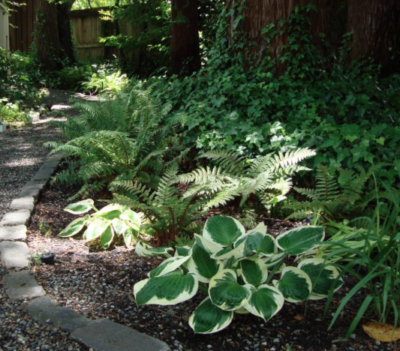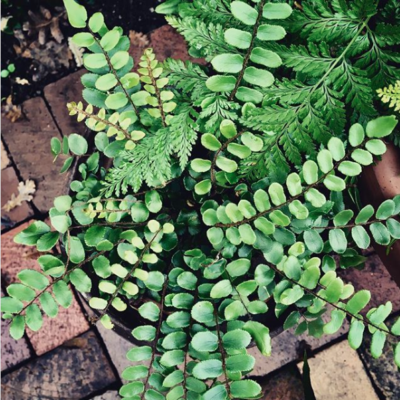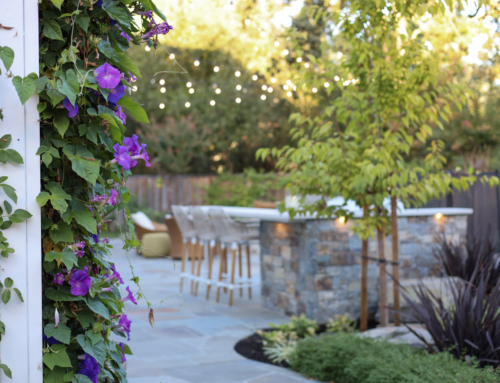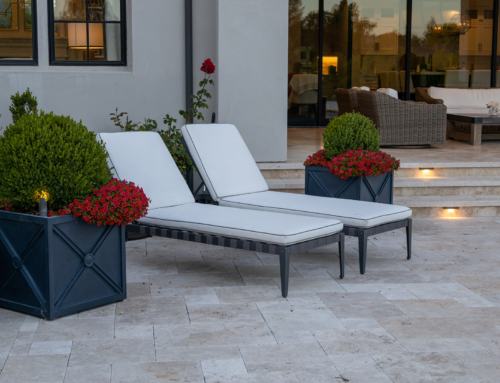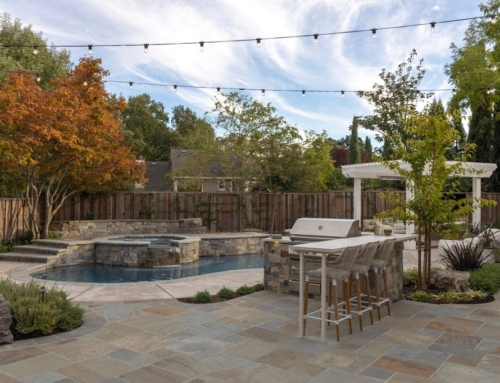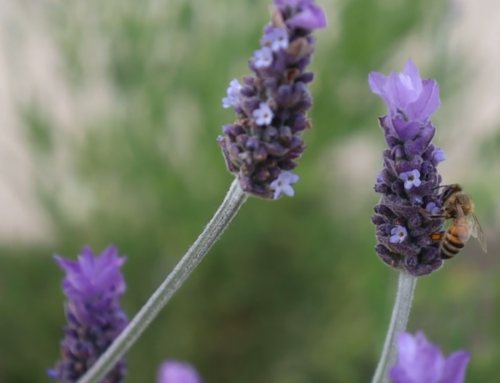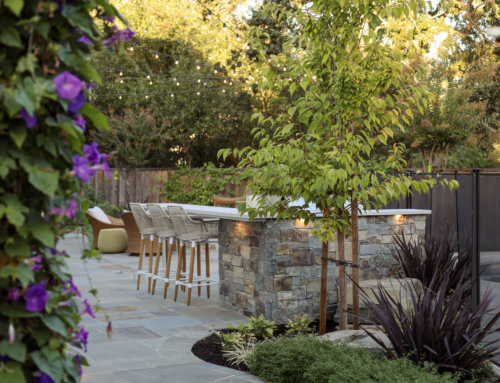Shade Gardening
The days are getting shorter, the sun is low in the sky, and sunlight is a little harder to come by. The change reminds us of something we consider at any time of year when designing landscapes – those parts of the landscape where sun is always hard to come by! Surprisingly, it’s sometimes the shady corners of the garden that can be the most striking, thanks to the remarkable variety of plants that prefer less direct light. Here are a few of our favorites.
Light On Dark
One of our favorite ways to bring excitement to the shade is with plants that feature white leaves or flowers. Variegation, or foliage that is marked with white, is particularly common among shade-loving plants because it helps the plant to receive more of the filtered light. These Hosta “Minuteman” above are just one of many large-leafed shade-lovers, and you can see how they offer striking contrast. In the title image, multiple sources of variegation create a lush vignette. Fatsia “Spiderweb” is a show-stopper with its deeply lobed green-and-white leaves, and despite its tropical appearance it is hardy in all parts of the Bay. The fine-textured blades of Carex “Everest” below create a lush, low-maintenance carpet.
Some of our other favorite variegated shade-lovers include:
Brunnera “Looking Glass” and “Jack Frost” – At the front of a border in brighter shade
Daphne odora variegata – As a structural shrub
Dianella tasmanica variegata – In mass or as a tall focal point
Polemonium “Touch of Class” – In mass or in front of a border planting
Polygonum odoratum variegata – In dark corners, near water features, or in a large pot
Flowers
Flowers that prefer shade really get the chance to shine among the shadows. Here in the Bay, we are lucky to be able to grow so many varieties, from semi-tropical to semi-arctic! But of course it would be unfair not to mention our native shade-lovers from the forests of the coast and the mountains. This Pacific Coast Iris, above, is blooming beautifully with only 1 to 2 hours of sun per day. For tricky spots under shallow-rooted trees and for areas of dry shade, these plants are indispensable! They come in a great variety of colors and are easily mixed up at the nursery, so try to purchase them only when you can see the flowers if the color’s as important to you as it is to us! Native to our inland forests are many stunning plants that we are lucky to be acquainted with. Tiarella (Foamflower) is gorgeous in mass and again prefers dry shade, and we could never overlook our wild Rhododendron, which is as much a delight to see in the wild as it is in the shade garden. Rhododendrons and Azaleas from North America and Asia are a classic look for shade, and with so many cultivars to choose from, it’s easy to fall in love.

Like our Pacific Rhododendron, many North American shade plants have cousins in the forests of central Asia. Where would shade gardeners be without our Hydrangeas or Viburnums, most of which are hybrids between American and Asian species? The lovely Anemone hupehensis in the title photo is another Asian plant much tougher than its delicate flowers would suggest! Debate continues as to whether it is a Chinese or Japanese Anemone, but in the meantime we are thoroughly enjoying its Autumn blooms. Partial shade is best for all of these plants to encourage flowering.
Ferns
As one of the oldest forms of plant life, ferns were clearly well-designed from the beginning to have endured for millennia. There are myriad varieties and each one has something unique to offer, in fact they might need their own blog! Here’s all we will say for now: Whatever your need, there’s a fern for that. Deep shade, light shade, large area or tiny corner, any spot in your shade garden can be filled with the right fern. This adorable Button Fern greats us every day at the door to our office.
Here at Montgomery Robbins, we take our planting design very seriously. That means finding the right plant for the right place every time, even on our large-scale projects! If you’re in need of a landscape re-design that makes use of every patch of sun and shade, contact us to book a consultation for our 2020 design season.


